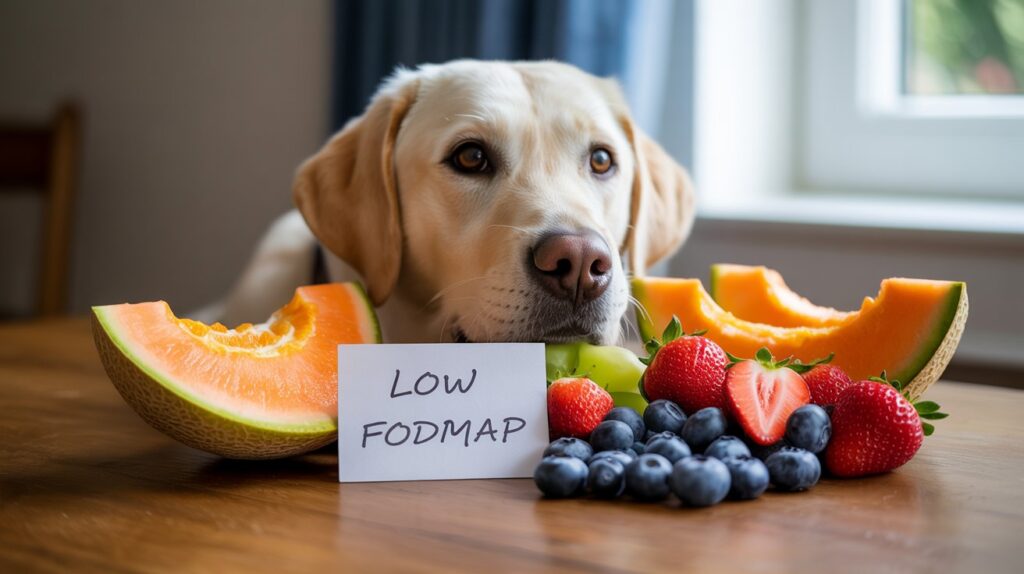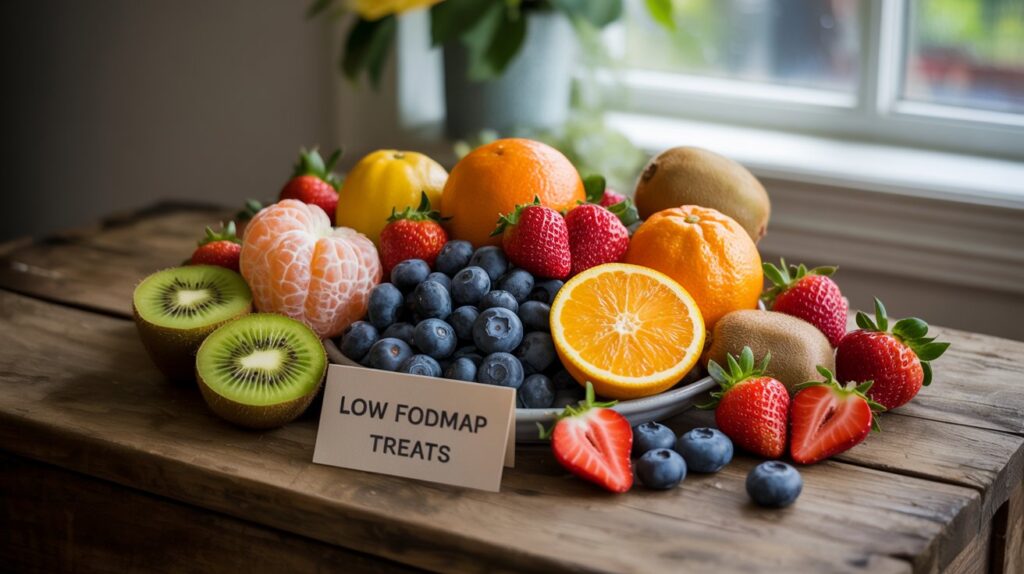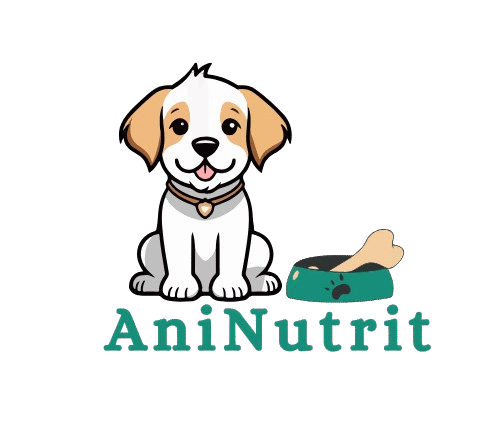Introduction:
If your Labrador Retriever has gas or bloating issues loose stools then it might be possible cause might be in their food, especially the fruits they eat. Some fruits contain natural sugars called FODMAPs. low-FODMAP fruits for lebrador retriver stands for Fermentable Oligosaccharides, Disaccharides, Monosaccharides, and Polyols. These are types of carbohydrates that are hard for some dogs to digest. When these fruits reach the large intestine they ferment and create gas it also be can lead to stomach pain, bloating, and diarrhea in sensitive dogs.
Labradors have big appetites and often love sweet treats like fruits. But not all fruits are good for golden lebraor. Especially if they have a sensitive stomach or signs of IBS (Irritable Bowel Syndrome). before using low fodmap aor high fodmap fruits you should also know about all the fruits high or low fodmap? High-FODMAP fruits like apples, pears, or watermelon can upset their digestive system. That’s why it’s important to know which fruits are safe and easy to digest.
Feeding your Labrador low-FODMAP fruits can help reduce tummy troubles and keep their gut healthy. These fruits are easier on the stomach and provide important nutrients without causing discomfort. In the next sections, we’ll share the best low FODMAP fruit options for Labs and explain how to serve them safely.

Table of Contents
2. Top 7 Low FODMAP Fruits Safe for Labrador Retrievers
a. Blueberries
- Rich in antioxidants
- Serve in small, washed portions
b. Strawberries
- High in vitamin C
- Chop off stems and offer fresh
c. Pineapple (Fresh Only)
- Great for digestion in moderation
- Must be peeled and cored
d. Ripe Bananas
- Gentle on the gut
- Slice and serve as occasional treats
e. Cantaloupe
- Low sugar and water-rich
- Remove seeds and rind
f. Oranges (in moderation)
- Vitamin C boost
- Only a few pulp-free slices
g. Kiwi (small amounts)
- Enzymes support digestion
- Remove fuzzy skin

3. Serving Guidelines for Labrador Retrievers
When you giving fruits to your Labrador Retriever, it’s important to serve the right portion sizes and follow some simple rules to serve them. Sometimes low FODMAP fruits can cause tummy troubles if given in large amounts. Mostly golden Labs are medium to large dogs with usually weighing between 50 to 70 pounds, so they can enjoy slightly more fruits than smaller breeds.
Portion Sizes by Weight
For a healthy 50–70 lb Labrador:
- Offer 1 to 2 tablespoons of fruit per serving.
- Treat fruits as a snack, not a meal replacement.
- you serve Limit fruit to 2–3 times per week if your dog has a sensitive stomach.
If your Labrador is smaller or overweight then reduce the amount. Always start small when introducing new fruits to avoid digestive upset.
Best Time to Serve Fruits
- Between meals: This allows you to monitor how your dog reacts to the fruit without other foods interfering.
- As training treats, Small fruit pieces like blueberries or banana slices are great for positive reinforcement.
- After exercise, A few bites of fruit can be a refreshing, hydrating reward.
Fresh vs. Frozen Fruits
- Fresh fruits are ideal because they contain more natural moisture and are free from additives.
- Frozen fruits (like blueberries or cantaloupe cubes) are also safe and can be soothing in hot weather. Just make sure they’re plain and unsweetened.
- Avoid canned fruits or those in syrup, as they often contain added sugars or preservatives that can harm your dog.
4. High FODMAP Fruits to Avoid in Labrador Diets
- Apples
- Pears
- Watermelon
- Mango
- Cherries
- Dried fruits like raisins, apricots, or dates
Low FODMAP Fruits Safe for Dogs with Nutrition Benefits
1. Blueberries
- Low FODMAP
- Benefits: Rich in antioxidants, Vitamin C, and fiber.
- Supports immune health and brain function.
- Serving Tip: 5–10 berries as a snack for medium dogs.
2. Strawberries
- Low FODMAP (in small portions)
- Benefits: High in Vitamin C, fiber, and antioxidants.
- Helps with inflammation and boosts the immune system.
- Serving Tip: Slice 1–2 strawberries for small dogs.
3. Pineapple (fresh, not canned)
- Low FODMAP in small amounts
- Benefits: Contains bromelain (aids digestion), Vitamin B1, and manganese.
- Supports joint health and digestion.
- Serving Tip: A few small cubes, remove core and skin.
4. Banana (unripe or just-ripe only)
- Low FODMAP when slightly green
- Benefits: High in potassium and Vitamin B6.
- Supports nerve and muscle function.
- Serving Tip: 2–3 slices for medium dogs.
5. Cantaloupe (Rockmelon)
- Low FODMAP
- Benefits: High water content, Vitamin A & C.
- Hydrates and supports eye and skin health.
- Serving Tip: 3–5 small chunks, no seeds or rind.
6. Kiwi (Green variety)
- Low FODMAP in small amounts
- Benefits: Loaded with Vitamin C, fiber, and antioxidants.
- Promotes good digestion and immunity.
- Serving Tip: 1–2 slices, peeled and cut.
7. Oranges (in moderation)
- Low FODMAP when given in small portions
- Benefits: Vitamin C, potassium, and fiber.
- Too much can be acidic—limit serving.
- Serving Tip: 1–2 small segments, no seeds or peel.
8. Raspberries (small portions)
- Low FODMAP under 30g (10–12 berries)
- Benefits: Rich in fiber, Vitamin C, and manganese.
- Promotes healthy teeth and reduces inflammation.
- Serving Tip: A few berries as an occasional treat.
9. Papaya
- Low FODMAP in moderation
- Benefits: Digestive enzymes (papain), Vitamin A & C.
- Aids digestion and improves skin health.
Serving Tip: A few chunks, no seeds or skin.

10. Dragon Fruit (Pitaya)
- Low FODMAP (small servings)
- Benefits: High in antioxidants, Vitamin C, fiber.
- Supports digestion and boosts immunity.
- Serving Tip: 1–2 small pieces, peel off outer skin.
Tips for Feeding Low FODMAP Fruits to Dogs
- Always introduce fruits gradually.
Remove seeds, pits, and skins.
- Serve chilled or pureed for a fun summer treat.
- Watch for any allergic reaction or tummy upset.
- Avoid high FODMAP fruits like apples, pears, mangoes, and watermelon.
5. How to Introduce Low FODMAP Fruits to Your Lab’s Diet
Introducing low FODMAP fruits to your Labrador’s diet should be done slowly and carefully. Always start with tiny amounts—just one or two small pieces. This helps your dog’s digestive system adjust without getting overwhelmed.
After serving the fruit, watch closely for any changes in behavior or health. Look for signs like loose stools, gas, bloating, or itching. These symptoms may mean the fruit doesn’t agree with your dog.
Only offer one type of fruit at a time. This makes it easier to figure out which fruit your Lab likes and tolerates well. If you feed many fruits at once and your dog has a reaction, it will be hard to know which one caused it.
To stay organized, keep a simple food journal. Write down the fruit you tried, how much you gave, and how your dog reacted. This is helpful for spotting patterns and sharing with your vet if needed.
By taking it slow and tracking your dog’s response, you’ll find the best fruits for your Lab’s sensitive tummy and make snack time both safe and healthy.
7. Final Tips for Feeding Low FODMAP Fruits
Before giving any fruit to your Labrador, always wash it thoroughly. This removes dirt, pesticides, and harmful bacteria that could upset your dog’s stomach.
When possible, choose organic fruits. They are grown without harsh chemicals and are a safer, more natural option for dogs with sensitive digestion.
Lastly, it’s important to consult your vet before making big changes to your dog’s diet. Even low FODMAP fruits can cause issues if your dog has allergies or other health conditions. Your vet can help you create a safe and balanced meal plan that includes the right fruits for your Labrador.
Conclusion: Low FODMAP Fruits for Labrador Retrievers
Choosing the right fruits for your Labrador Retriever can help improve their digestion and overall well-being. Low FODMAP fruits are gentle on sensitive stomachs and can reduce bloating, gas, and discomfort in dogs with digestive issues. Safe options like bananas, blueberries, strawberries, oranges (in small amounts), and kiwi offer natural vitamins, antioxidants, and fiber without upsetting your Lab’s tummy.
Always introduce new fruits slowly and watch for any reactions. always Remember to remove seeds, peels, and pits before serving, and offer fruits as occasional treats. With care and moderation low FODMAP fruits can be a healthy, tasty part of your Labrador’s diet!


